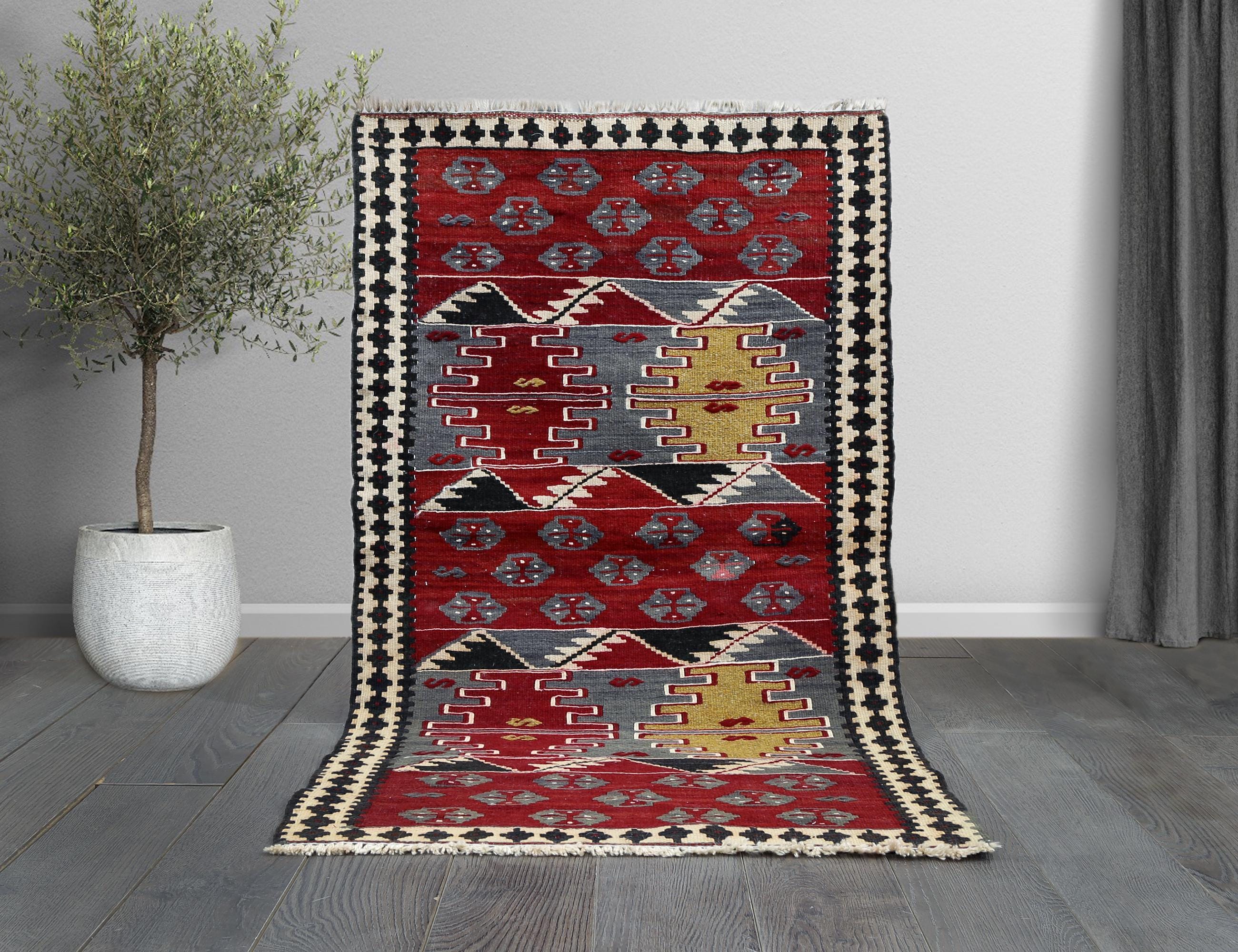
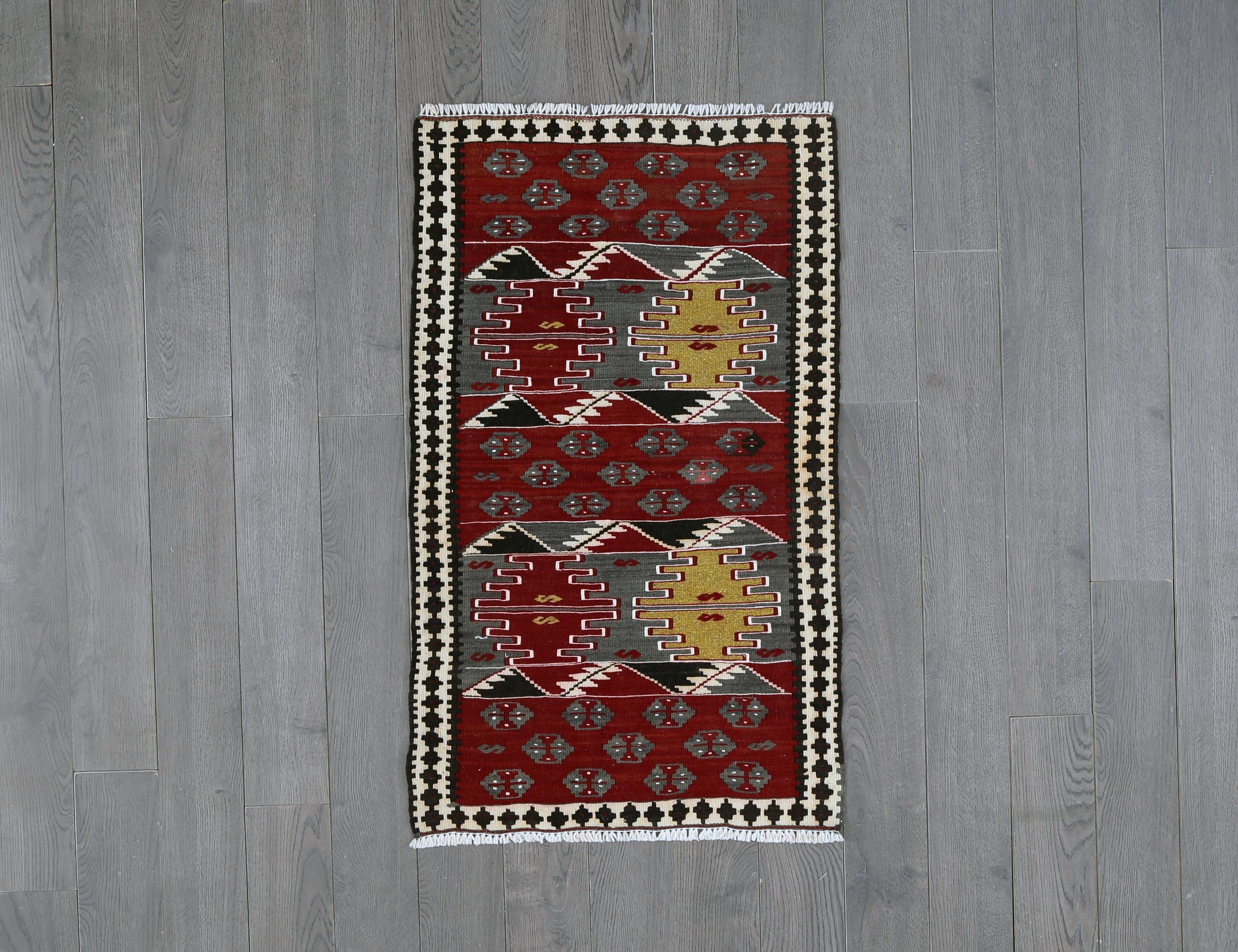
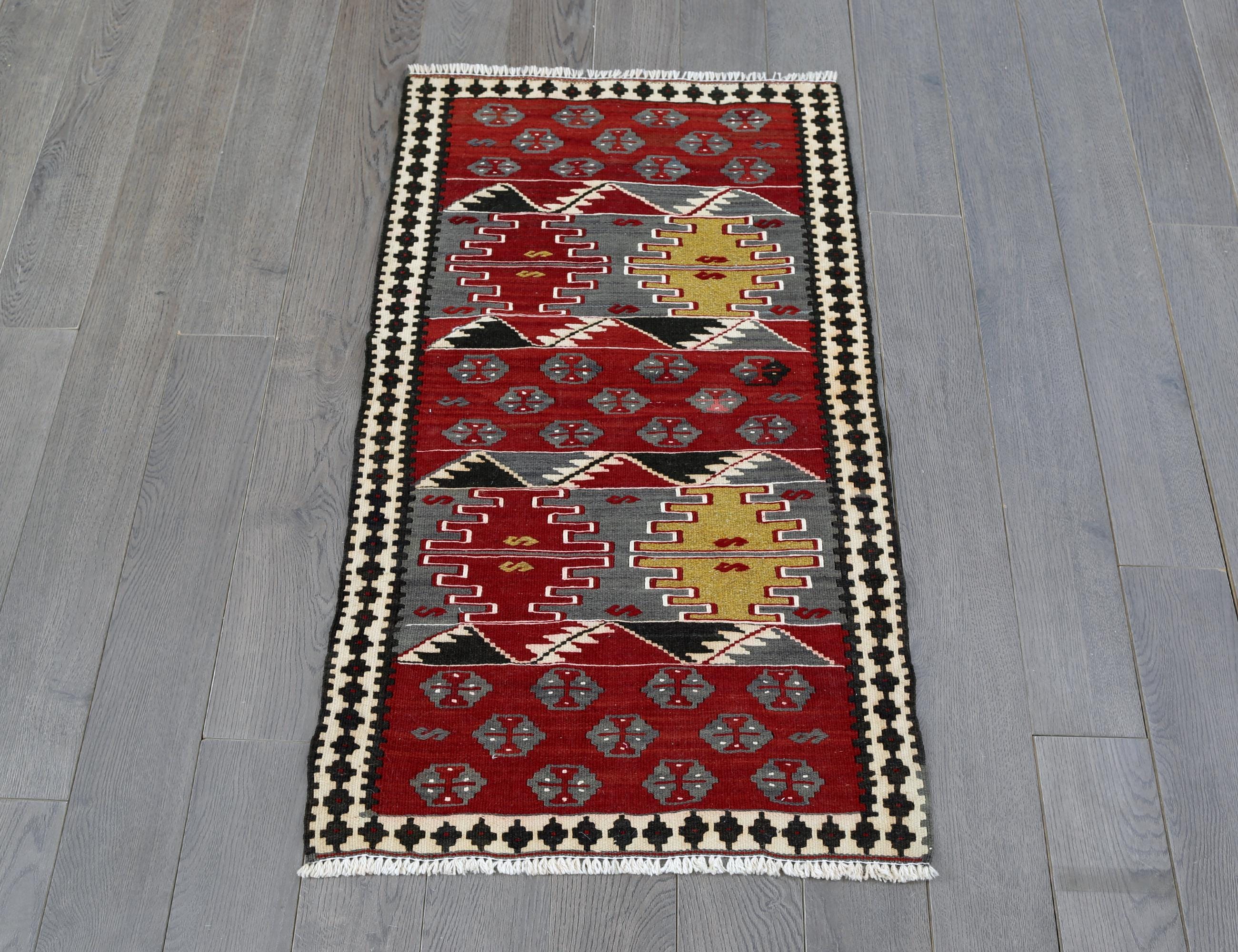


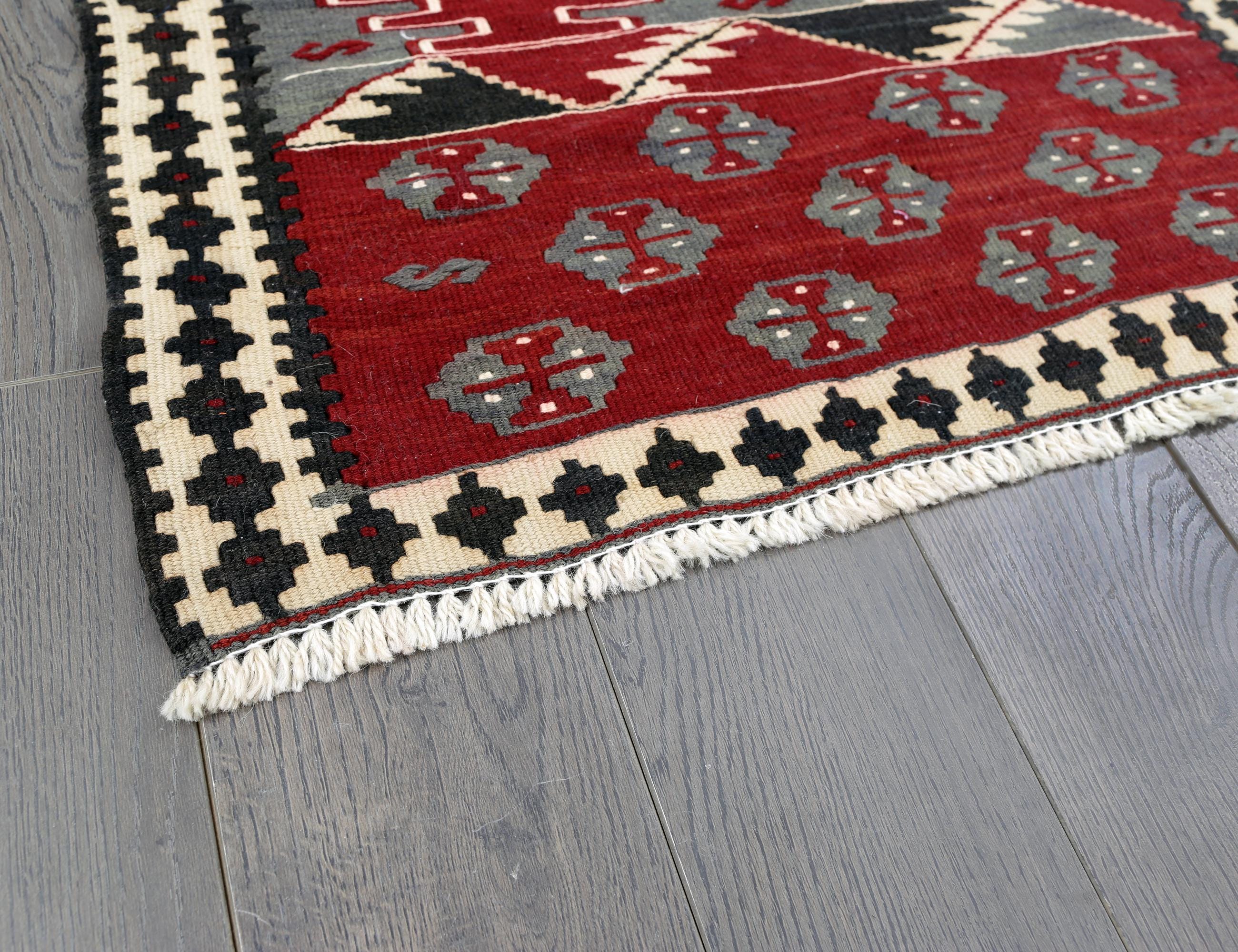

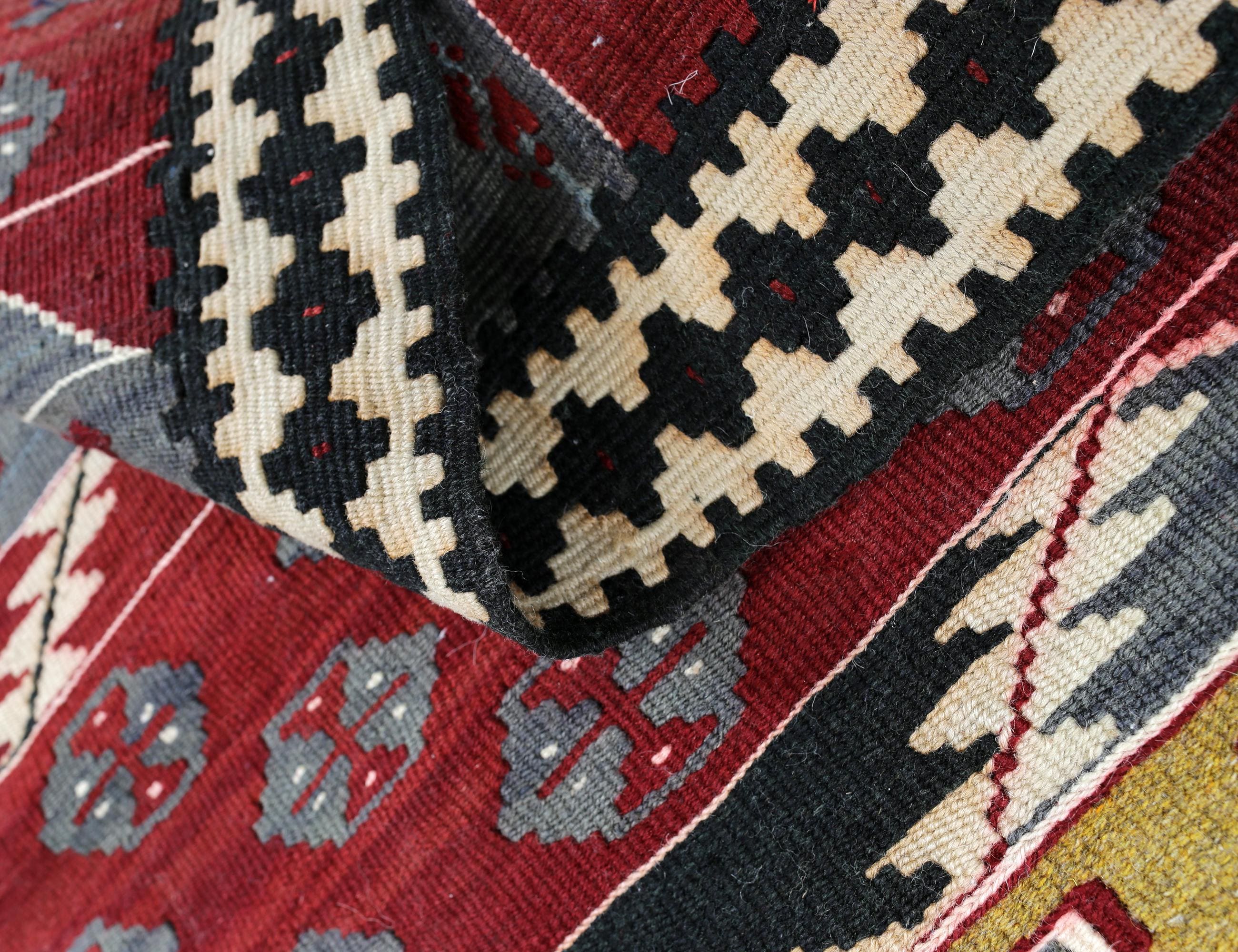
Handwoven Wool Kilim Runner: Madder Red Geometric Design
$280.00 $700.00
This exquisite small-format handwoven kilim runner is a superb example of the classic Anatolian tribal weaving tradition, recognized for its geometric precision, symbolic motifs, and balanced color harmony. Crafted entirely by hand on a horizontal loom using fine wool yarns, this piece radiates both folk artistry and modern minimalism. The dynamic zigzag medallions and crisp contrasting palette of madder red, slate grey, mustard gold, and ivory make it an instant statement in any space.
This flat-weave rug belongs to the Kilim weaving tradition, historically produced by nomadic and semi-nomadic tribes across Anatolia and surrounding regions. Unlike pile rugs, kilims are woven using a slit-weave tapestry technique, which creates sharply defined geometric shapes and reversible patterns.
The field design presents two stacked “ram’s horn” medallions, rendered in brick red and golden yellow, set against alternating bands of grey and red. These angular medallions—known as koçboynuzu—represent strength, fertility, and protection in tribal symbolism. The connecting latch motifs (hooked elements) link the pattern vertically, symbolizing unity and the continuity of life.
The borders are adorned with stepped cruciform patterns (often called elibelinde or “hands-on-hips” motifs), a traditional emblem of feminine energy and creation, protecting the home and its inhabitants. The minimalist ivory and black framing adds bold contrast, emphasizing the central field and giving the rug a strong architectural rhythm.
The back shows tight, even weft interlocking—evidence of expert flat-weave craftsmanship—and the fiber sheen and texture confirm 100% handspun wool dyed with natural plant and mineral dyes. The even tone transitions and faint abrash (dye variation) across the grey field are hallmarks of small-batch hand-dyeing.
This rug is a modern-era tribal piece, likely woven in the 1980s–1990s, preserving classical motifs while maintaining crisp colors and structure.
Features:
Origin / Tradition: Anatolian tribal weaving, likely from Central or Eastern Anatolia
Date: c. 1980–1995
Size: 107 × 64 cm (≈ 3'6" × 2'1")
Construction: Handwoven flat-weave (kilim)
Technique: Slit-weave tapestry method
Material: 100% handspun wool (warp & weft)
Colors / Dyes: Madder red, slate grey, mustard gold, ivory, and black; natural and vegetable dyes
Weaving density: Approx. 45–55 weft lines per inch, typical of fine tribal kilims
Thickness: 3–4 mm (flat and reversible)
Condition: Excellent vintage — minimal signs of age, no stains, holes, or repairs. Slight natural irregularities consistent with hand-loomed work.
Weaving time (est.): ~2–3 weeks for one skilled artisan
Authentic tribal kilim — entirely handwoven on a traditional loom
Reversible and lightweight, ideal for layering or wall display
Symbolic ram’s horn and protective motifs from Anatolian design heritage
Natural dyes with earthy yet vivid contrast
Perfect as a small runner, accent piece, or wall tapestry
Care instructions
Vacuum gently without a beater bar.
Rotate periodically to balance wear.
For spills, blot immediately with a dry cloth; avoid harsh cleaners.
Handwash only with cool water and mild soap if necessary, or use professional kilim cleaning services.
Avoid extended direct sunlight to preserve natural dye tones.
Use a non-slip rug pad underneath to prevent shifting and extend longevity.
Styling ideas
This kilim complements modern boho, Scandinavian, rustic, or mid-century interiors. Use it in entryways, beside the bed, in kitchens, or under a reading chair. Its geometric minimalism bridges old-world tradition with contemporary aesthetics, making it a versatile statement piece.
Bring home an authentic piece of tribal artistry and living heritage—handwoven, sustainable, and full of timeless symbolism. Ready to ship, professionally cleaned, and guaranteed 100% handmade wool craftsmanship.
Shipping from Pakistan
Processing time
5-7 business days
Customs and import taxes
Buyers are responsible for any customs and import taxes that may apply. I'm not responsible for delays due to customs.
Payment Options
Returns & Exchanges
I don't accept returns, exchanges, or cancellations
But please contact me if you have any problems with your order.
